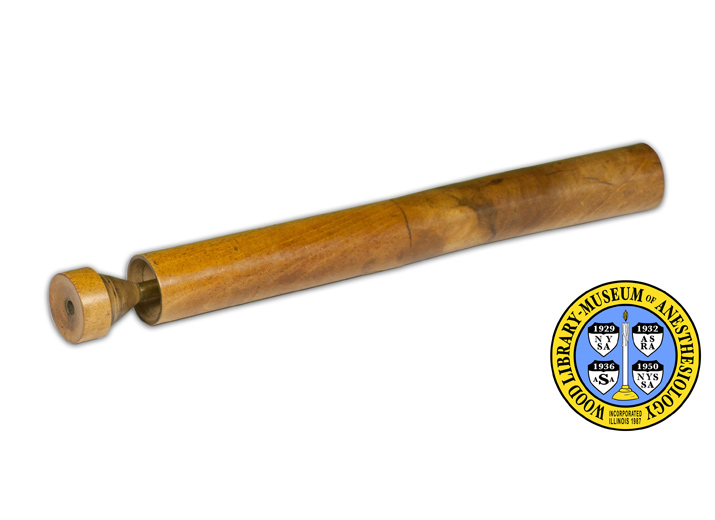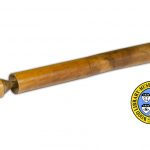Laennec Stethoscope
A stethoscope is a device through which doctors listen to sounds in the body, such as heart beats and breath sounds. Before René Laënnec (1781-1826), a French physician, introduced the stethoscope, doctors put their ears directly on their patient’s body. To use the Laënnec ‘monaural’ (hearing with only one ear) stethoscope, the funnel shaped end was placed against the patient and the physician put his ear to the other end.
Laënnec devised the first stethoscope in 1816. Modern equipment used to monitor patients' vital signs during anesthesia, such as heart rate, respiratory rate and blood pressure, can be traced back to early wooden stethoscopes like this one. The stethoscope we are familiar with today, binaural (hearing with both ears), became common in the 1850s.
Catalog Record: Laennec Stethoscope
Access Key: aike
Accession No.: 1991-09-09-1
Title: Laënnec stethoscope / designed by Rene Laënnec.
Author: Laënnec, R. T. H. (René Théophile Hyacinthe), 1781-1826.
Title variation: Alt Title
Title: Laennec’s stethoscope.
Publisher: [Paris : René Laënnec, ca. 1819.]
Physical Description: 1 stethoscope : wood, brass, varnish ; 36 x 4 dia. cm.
Subject: Stethoscopes.
Subject: Auscultation – instrumentation.
Subject: Physical Examination.
Note Type: General
Notes: Title based on engraved markings on the metal plate on the case.
Note Type: With
Notes: With a cylindrical leather case. Attached to the case is a metal (brass?)
plate engraved with, “STETOSCOPE tourné par LAENNEC offert par lui au
Professeur LOBSTEIN de STRASBOURG qui le laissa à HIRTZ qui à son tour le
donna au Professeur STRAUS”. (Translation: Stethoscope turned by Laennec and
offered by him to Professor Lobstein in Strasbourg who left it to Hirtz who
in his turn gave it to Professor Straus.)
Note Type: Citation
Notes: Laënnec RTH. De l’Auscultation Me´diate, Ou, Traite´ du Diagnostic des
Maladies des Poumons et du Coeur, Fonde´ Principalement sur ce Nouveau Moyen
d’Exploration. Paris: Brosson et Chaude´, 1819.
Note Type: Physical Description
Notes: Stethoscope made of two varnished, hollow wood cylinders and a funnel shaped
‘chest piece’; The two wood (walnut?) cylinders form the body of the
stethoscope and attach to each other via a screw thread; A brass tube fitting
on the chest piece goes into the proximal end (from a patient’s perspective)
of the body and holds the chest piece in place; Both ends are slightly
concave.
Note Type: Reproduction
Notes: Photographed by Mr. William Lyle, 7/14/2010.
Note Type: Historical
Notes: Rene Laënnec, a French physician, devised the first stethoscope in 1816. His
early stethoscopes were longer than the version described and illustrated in
his 1819 text: De l’Auscultation Me´diate. The lineage of modern equipment
used to monitor patients’ vital signs during anesthesia can be traced back to
the early wooden stethoscopes. The familiar binaural stethoscope became
common in the 1850s.
Note Type: Publication
Notes: McIntyre JW. Stethoscopy during anaesthesia. Can J Anaesth. 1997;44(5 Pt
1):535-42.




